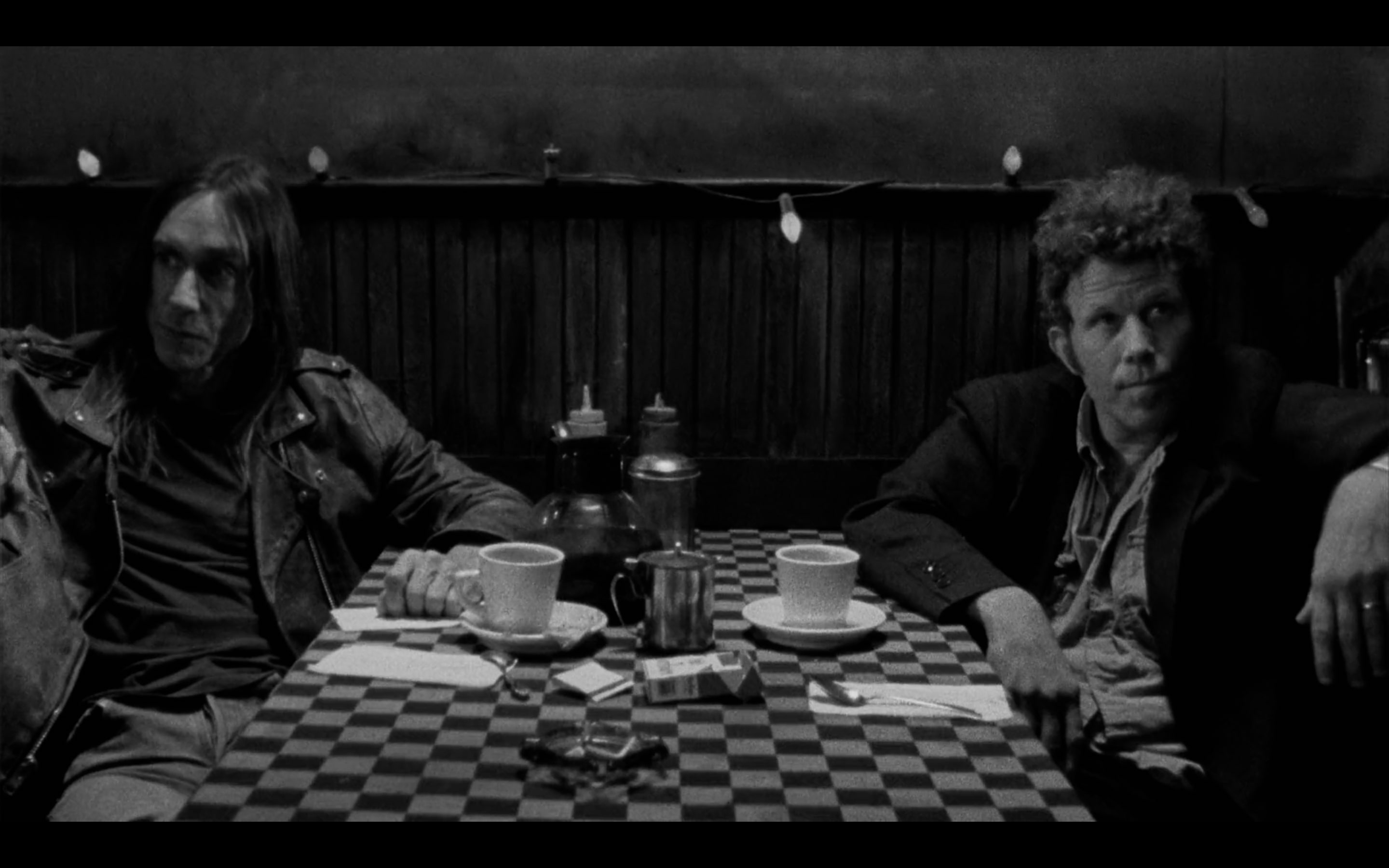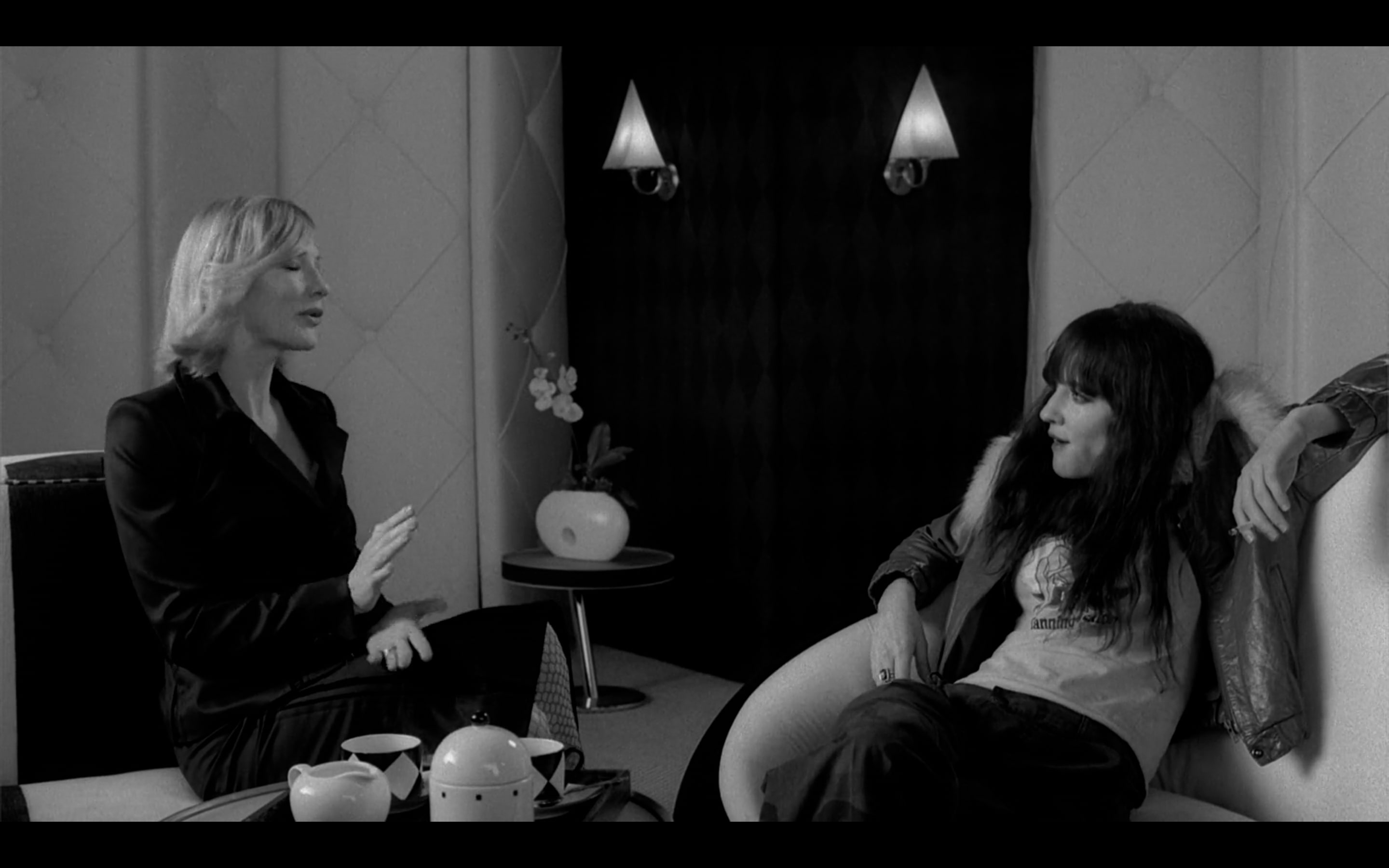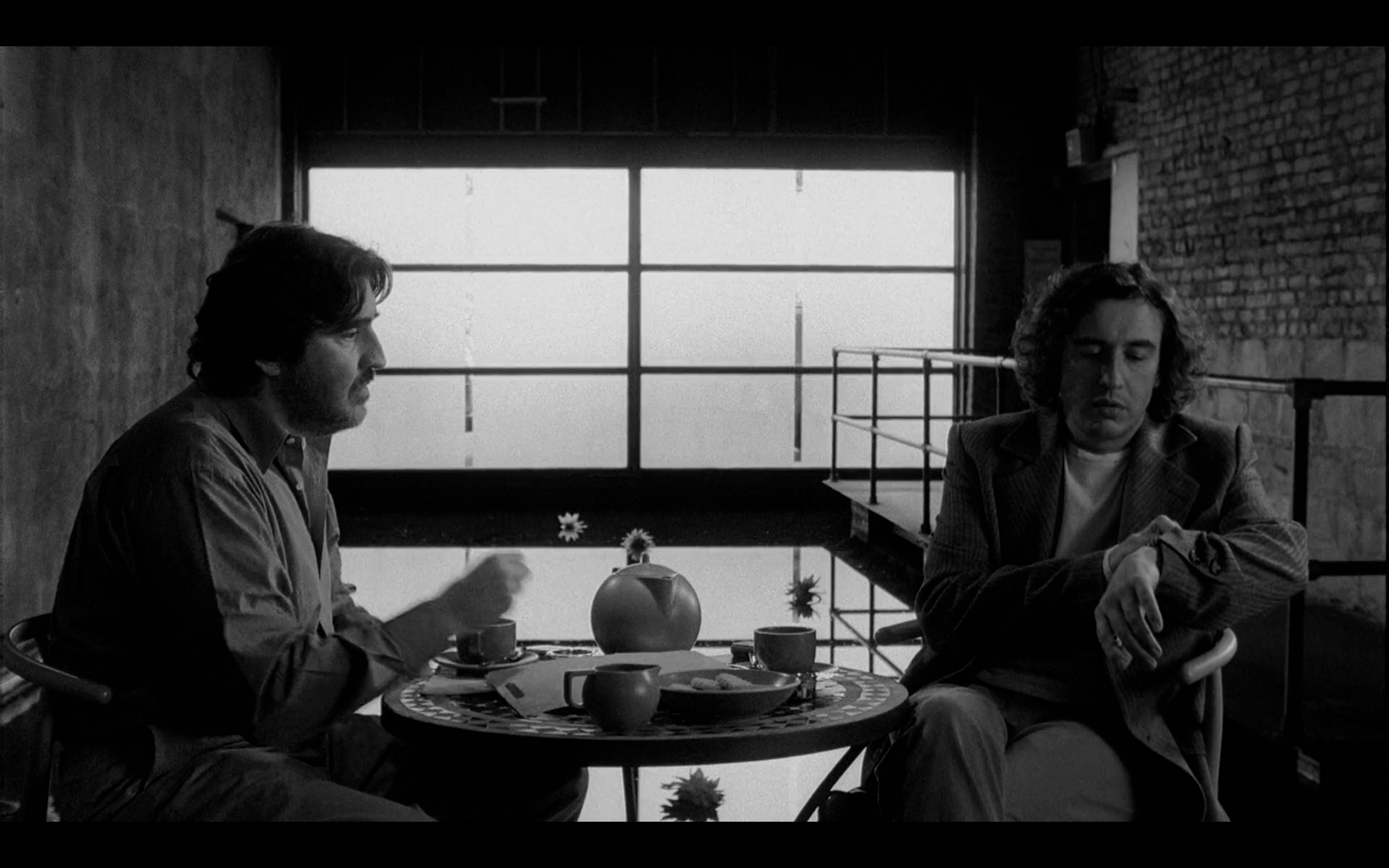
... views
Coffee, Cigarettes, and People on a Chessboard
Philosophical chatter over black cups and white smoke.
The movie Coffee and Cigarettes (2003) is, as the title suggests, a collection of short black-and-white vignettes centered around the medium of coffee and cigarettes. Director Jim Jarmusch uses the simple pleasures of everyday life - a cup of coffee and a puff of a cigarette - to capture the sensory pleasures, philosophical implications, and subtle relationships between people. At first glance, it's an ordinary café conversation, but there are unexpected symbols and insights hidden within. The movie flows like a casual conversation, but it leaves a lingering aftertaste like the bittersweetness of coffee.
The strong aroma of coffee and the haze of cigarette smoke are familiar scenes. Characters sip coffee and smoke cigarettes while telling their stories. In the movie, coffee and cigarettes are more than just props, they are the "friendly links" that connect people. Strangers can strike up a conversation with a cup of coffee in front of them, and a cigarette together can create a sense of camaraderie. Indeed, cafes have long been social spaces where debate, art, and philosophy flourish, and a cigarette is often a conversation starter with a stranger. Jarmusch's camera captures these small acts of everyday life, showing how coffee and cigarettes, which we enjoy so casually, can be a catalyst for human connection.
Conversations over a cup of coffee may seem like leisurely chit-chat, but underneath the surface, there are many different human dynamics at play. Throughout the episodes, Jarmusch captures the power relations, awkwardness, hidden tension, and occasional moments of connection between people. Interestingly, most of the characters in the movie are based on real actors or singers, but the situations are completely scripted and fictionalized. Watching real celebrities interact awkwardly with each other blurs the line between reality and acting, and makes the audience feel like they can relate to them.
Let's take a look at a few episodes
- The scene between rock music legends Iggy Pop (https://ko.wikipedia.org/wiki/이기_팝) and Tom Waits (https://ko.wikipedia.org/wiki/톰_웨이츠) is a feast of awkwardness. The two are polite at first, but the conversation quickly devolves into a subtle competition. The scene where they smoke together, "just this once," while emphasizing the fact that they're both non-smokers, shows their duality and humanity. This episode captures the tension of human relationships, where the will to be close and pride waver between the two. The tone is joking, but underneath it is self-defense and checks and balances. That ethereal air of friendship that seems to be on the verge of forming, but never does, is the real reality of coffee and cigarettes.

- actress Cate Blanchett plays two characters in one episode, the famous "herself" and her unknown cousin "Shelley". It's a set-up that's hard to miss unless you're very perceptive. Sitting across from each other in a chic hotel lounge, the cousins are outwardly friendly, but there's a subtle undercurrent of jealousy and distance in their conversation. Despite Kate's affectionate words, Shelly feels inferior and puts up a wall between them, and the two part ways in a strange atmosphere of running parallel lines.

- The encounter between British actor Alfred Molina and comedian Steve Coogan wittily illustrates how interests can change human attitudes. Molina is thrilled to learn that the two are distant relatives, but Coogan is skeptical. However, when he realizes that Molina is a friend of Spike Jonze, Coogan's demeanor immediately changes to one of politeness and flattery. The scene hilariously satirizes how easily human attitudes can shift based on understanding, and how naturally we accept such changes. Despite the outward smile, the dialog is a mixture of acting and calculation.

As such, each episode's dialog is laced with small and large psychological games. Awkward silences between people meeting for the first time, bored nerves between old friends, conflicts between cultures or generations. In another scene, hip-hop musicians RZA and GZA drink herbal tea and worry about each other's health, while actor Bill Murray makes a surprise appearance as a restaurant worker.
Through their conversation, the audience tastes the "sweetness and bitterness" of human relationships. The awkward moments when words slip out of our mouths, the look of secret hurt at the other person's words, and the laughter when the opposite happens. These moments of laughter and bitterness accumulate to become the overall sentiment of the movie and eventually lead to our empathy.
One of the most eye-catching elements of the movie is the checkerboard pattern that appears in almost every scene and the contrast between black and white. Every episode is shot in black and white, with no color, and it looks like a classic art photograph. In particular, there are often checkerboard tiles or tablecloths arranged in alternating black and white on the tables where the characters sit or on the floor of the cafe, and this visual motif becomes a common backdrop that ties the entire film together. Even the coffee and cigarettes themselves are a stark contrast in color, with one a dark blackish-brown liquid and the other a pure white smoke and ash. In this way, the movie consistently displays an aesthetic of contrast and inversion through its props and settings.
The checkerboard pattern looks like a chessboard, making the conversation between the two men feel like a mind game. Just like the alternating black and white squares, the conversation doesn't always go in a straight line, but sometimes meanders. This non-linear flow of communication seems to be symbolized by the crossing pattern of the checkerboard. At the same time, the strong contrast of black and white makes the differences between the characters stand out, but also shows the harmonious pattern that the differences create. People from opposite personalities and backgrounds are in the same picture as long as they are sitting at the same table drinking the same coffee. Just as differently colored pieces come together to form a single pattern, the various characters achieve a delicate harmony through the medium of coffee and cigarettes.
The unified black and white tone is also significant. The lack of color makes the different stories visually feel like they are happening in the same world, and the audience is more focused on the dialogue and facial expressions in each scene. In the absence of color, details such as the trembling of the fingertips holding a coffee cup or the wisps of smoke from a cigarette stand out. This is a device that maximizes the beauty of dialogue, which is the core of the film.
There are also unexpected references to Nikola Tesla in several episodes. When musician [Jack White] (https://ko.wikipedia.org/wiki/잭_화이트) is having coffee with his coworker [Meg] (https://ko.wikipedia.org/wiki/메그_화이트) and discussing his Tesla coil, he enthusiastically tells her that the genius inventor [Nikola Tesla] (https://ko.wikipedia.org/wiki/니콜라_테슬라) believed that "the earth is one giant resonator." This science talk, which comes out of nowhere in the middle of café chatter, makes the audience pause and think, "What does he mean by a resonator?" Interestingly, this line appears again later in the movie. "The earth is a resonant body..." an elderly friend mumbles over coffee in a rundown warehouse in New York City, but he doesn't really know what it means, and he smiles wryly.
Tesla's words suggest the theme of resonance that runs through the entire movie. Resonance is the phenomenon where the vibration of one object reverberates in another object, and if the conversation works, it will resonate in the other person's mind, and if it doesn't, it will disappear without an echo. In fact, there are parts of the movie where the words of the previous episode are repeated in the later episode or appear as echoes in the conversations of other characters. It's as if the scattered stories are connected by an invisible thread and resonate with each other. The chatter of seemingly unrelated people, some talking about dreams, some worrying about their health, some in different places, all with subtle intersections. The message is that "the earth is a resonator" and we are all connected somehow.
When conversations resonate, the moment becomes a little bit magical. Even the characters in the movie have awkward conversations at first, but they end up laughing or exchanging advice. Conversely, conversations that don't resonate until the very end often end up with people talking past each other. These small scenes, set over a small table with coffee and cigarettes, show us the strange possibilities of communication and empathy. Jarmusch captures the philosophical resonance of these small talks with his signature style.
The black-and-white images of people sharing a coffee cup and an ashtray seem unassuming and ordinary. However, "Coffee and Cigarettes" draws sharp insights into human relationships and life from the mundane. We all have memories of chatting with friends over a cup of coffee and suddenly becoming awkward, of being hurt by something said and laughing at a joke, and this movie is a mosaic of those moments.
When the movie is over, you're left with a lingering smile and a small but lingering feeling, like the quiet after a deep conversation. The next time you're having coffee and a scene from the movie pops into your head, you might find that it's resonating somewhere in your everyday conversation.